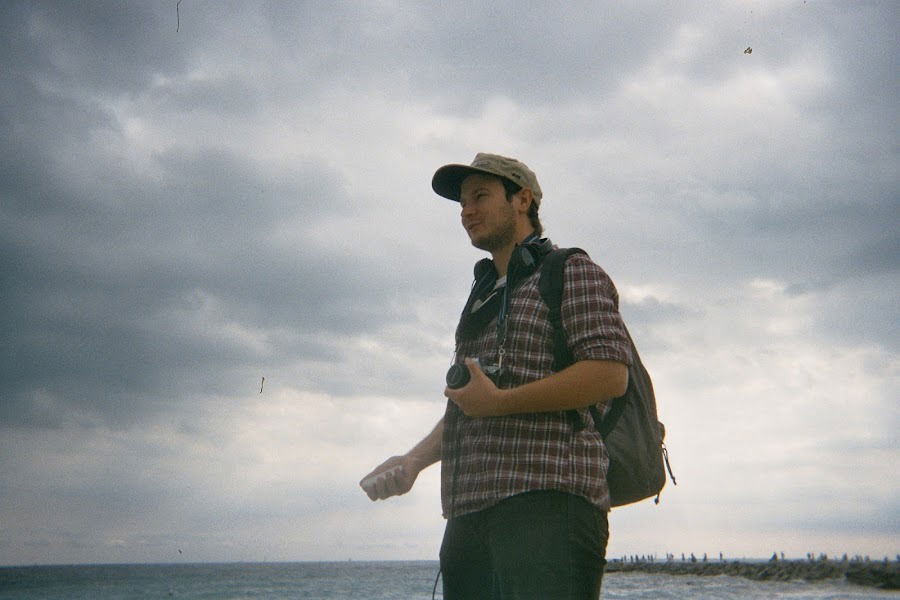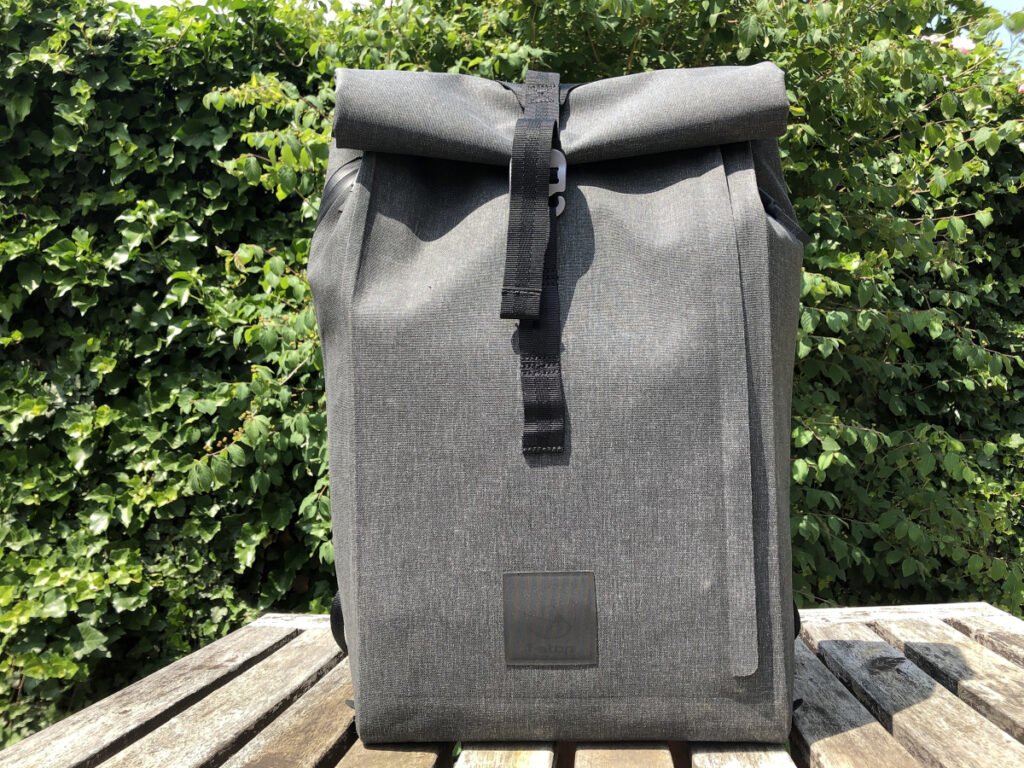A DSLR camera is still a great option if you’re a photography lover. DSLRs might not be as trendy as mirrorless cameras at the moment. But when it comes to photography, the DSLR is worth its weight in gold.
There are fantastic APS-C and full-frame DSLRs. And everyone from beginners to professionals will find the perfect DSLR camera in this article.
The Canon EOS Rebel SL3 is our favorite DSLR camera. That’s because it’s a brilliant entry-level camera that’s the perfect starting point for new photographers. It produces bright. vibrant images. And you can even use it for 4K video recording or live streaming.
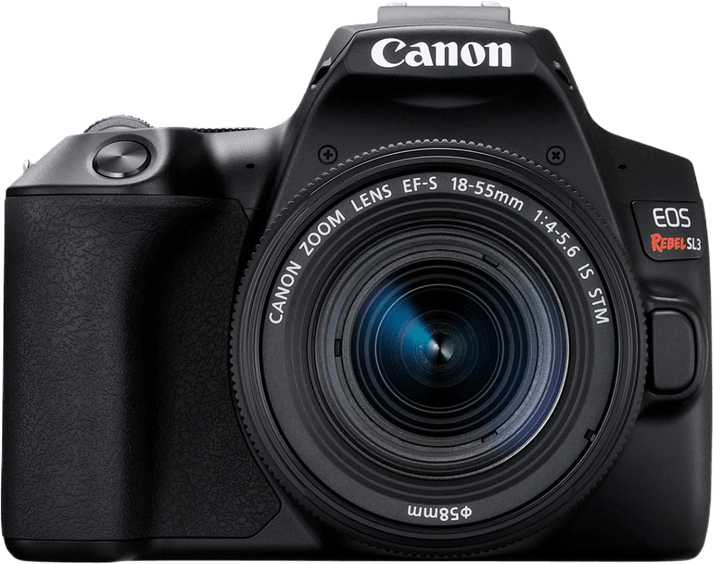
What Is the Best DSLR Camera?
DSLR cameras remain popular with photographers of all levels. And that’s with good reason. They’re reliable machines. They have excellent photography features. And they consistently produce excellent results.
Some DSLRs even shoot excellent video. You’ll see many 4K DSLRs in this list. But you can also see our full list if you want to find the best DSLR for video.
The best DLSR cameras are a dream to use. They are heavier and bulkier than their mirrorless rivals. But many prefer the heft of a decent camera in their hands.
They also lack some of the more advanced features of a mirrorless. But when it comes to traditional photography genres like landscape, portrait, or macro photography, a DSLR is perfect for the job.
Here’s a quick rundown of all the best DSLR cameras. The list has shrunk in recent months as some models run out of stock. But all the DSLR cameras in this list are available brand new. Keep scrolling to see a detailed description of each DSLR camera.

- Excellent value
- Compact body for a DSLR
- Insanely good battery life
- Fully articulating screen is helpful for capturing video
- Solid 4K video quality
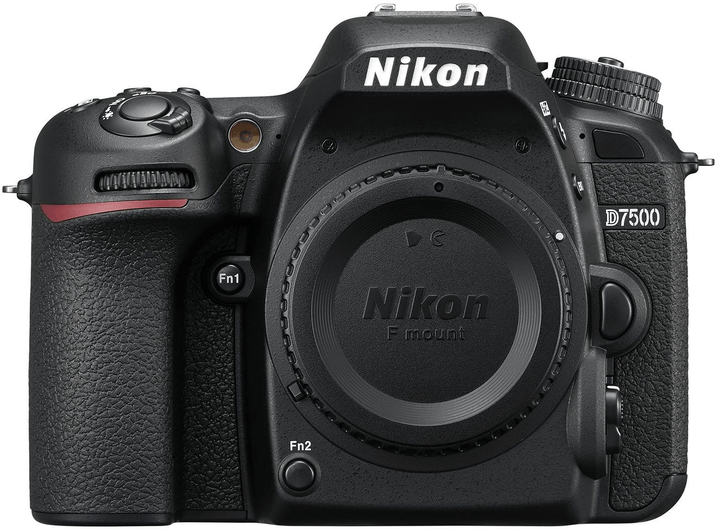
- Weather-sealed body for outdoor shooting
- 20.9 MP DX-format CMOS sensor
- 4K UHD video recording at 30 fps
- 153-point AF system with 99 cross-type points
- 10 fps continuous shooting
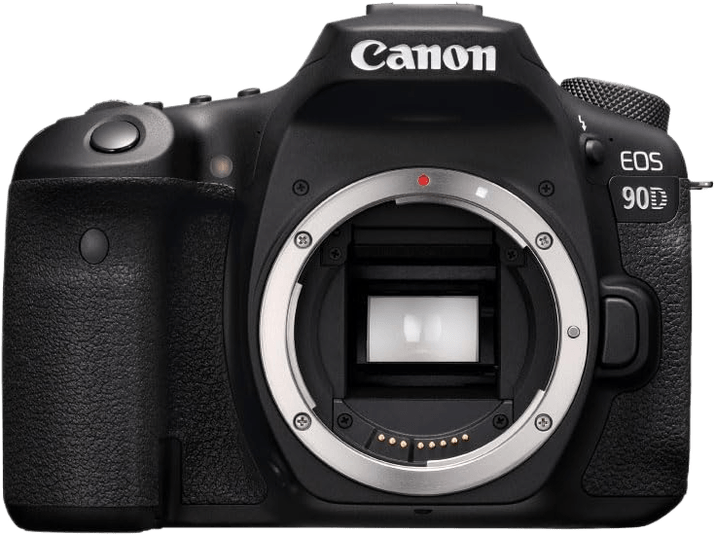
- 32.5 MP CMOS sensor
- Up to 10 fps continuous shooting
- Dual Pixel CMOS AF for Live View & 4K video
- Vari-angle touchscreen LCD
- Built-in Wi-Fi and Bluetooth connectivity
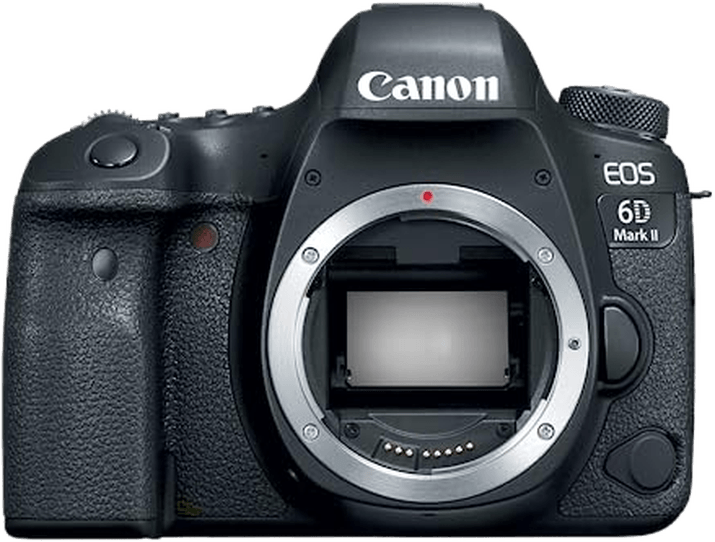
- Fantastic image quality
- Impressive 45-point AF system
- Built well and nice to handle
- Handy built-in Wi-Fi and GPS
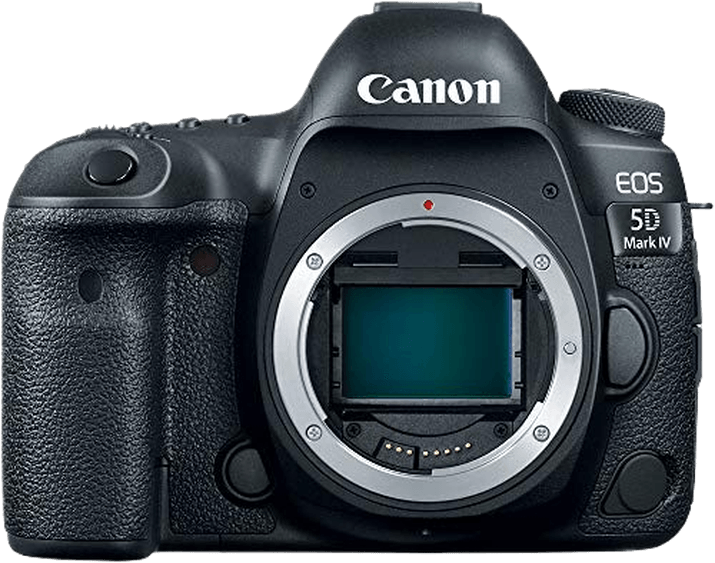
- Quality sensor produces detailed and vibrant images even at high ISOs
- Dual Pixel AF with eye detection
- User-friendly touch-to-focus screen
- 900-shot battery life
- Cinema-quality (DCI) 4K video
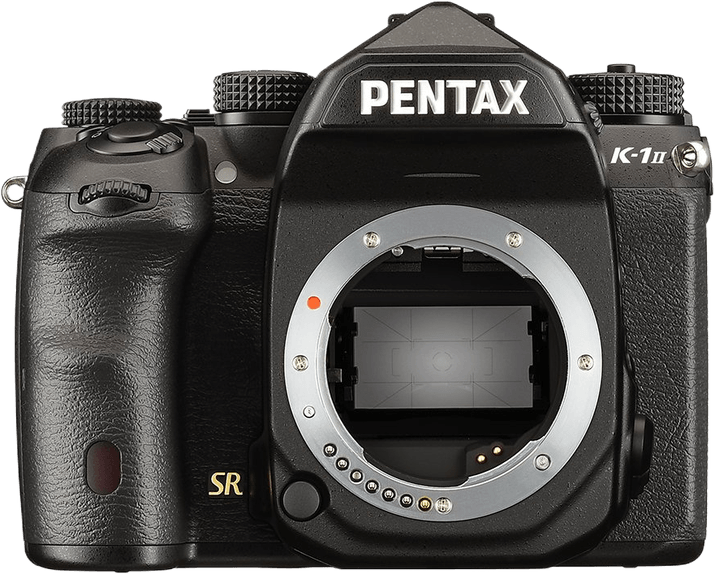
- Plenty of manual controls
- A wide ISO range for low light
- 5-axis Shake Reduction II worth 2.3 to 3.6 shutter stops
- Dynamic Pixel Shift resolution provides sharper images
- Astrotracer tracks stars at night
- Durable camera body with excellent weather sealing
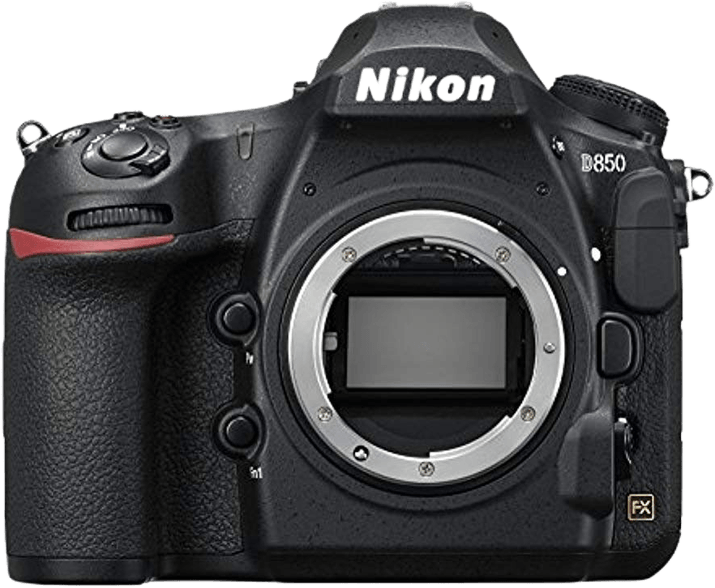
- Fantastic overall image quality
- Excellent 3D continuous AF tracking
- Long, 1,840-shot battery life
- Durable, weather-sealed construction
- Sharp 4K/30p Ultra HD video
Best DSLR Cameras
Now we’ll look at each DSLR camera in more detail. We start by looking at the APS-C models. These are at the entry-level/intermediate end of the spectrum. Even inexperienced photographers can pick one up and start shooting straight away.
Further down the list, we switch to full frame DSLRs. These are suitable for intermediate users and professionals. They have higher image resolutions, giving you better image quality. They also have more advanced features and an overall higher performance.
1. Canon EOS Rebel SL3

| Released |
Released
2019
|
| Sensor Format |
Sensor Format
|
| Lens Mount |
Lens Mount
Canon EF/EF-S
|
| Megapixels |
Megapixels
24 MP |
| Autofocus Points |
Autofocus Points
9 |
| Maximum ISO (Native) |
Maximum ISO (Native)
25,600 |
| Frame Rate |
Frame Rate
5 fps |
| In-body Stabilization |
In-body Stabilization
|
| Max Video Resolution |
Max Video Resolution
|
| Other Key Features |
Other Key Features
Vari-angle touchscreen, webcam functionality, Wi-Fi connectivity
|
| Best For |
Best For
Beginners
|
The Canon EOS Rebel SL3 takes the top spot because it’s the best DSLR camera for beginners. It’s accessible and easy to use, but also produces excellent results. You don’t need any experience to use it, and it’s sure to fuel your enthusiasm for photography.
The ASP-C CMOS sensor has a 24.1 MP resolution, which is excellent for an entry-level camera. The images are bright with sharp details and true-to-life colors.
A 100 – 25,600 ISO range is modest by modern standards. But the low-light performance is surprisingly good for a beginner camera. You only experience digital noise at the very top of the ISO range.
A classic optical viewfinder gives you a clear view of your scene. You only get a 9-point AF system when using the viewfinder. This functions well, but you get a superior AF system when using Live View and the vari-angle touchscreen. This gives you subject eye-detection and tracking.
4K video recording makes it a great DSLR camera for aspiring filmmakers. You are limited to a 25 fps frame rate in 4K, but there is a 60 fps option if you switch down to Full HD. The SL3 also doubles as a webcam, so you can use it for live streaming.
The Canon EOS Rebel SL3 offer beginners a chance to grow and develop their photography skills. The results will encourage them and build enthusiasm. And it’s an affordable DSLR camera that comes with a kit lens.
2. Nikon D7500

| Released |
Released
2017
|
| Sensor Format |
Sensor Format
|
| Lens Mount |
Lens Mount
Nikon F DX
|
| Megapixels |
Megapixels
20.9 MP |
| Autofocus Points |
Autofocus Points
51 |
| Maximum ISO (Native) |
Maximum ISO (Native)
51,200 |
| Frame Rate |
Frame Rate
8 fps |
| In-body Stabilization |
In-body Stabilization
|
| Max Video Resolution |
Max Video Resolution
|
| Other Key Features |
Other Key Features
4K at 30 fps, excellent low-light performance, 200 RAW burst limit
|
| Best For |
Best For
Anyone looking for a reliable DSLR all-rounder
|
The Nikon D7500 is a versatile camera that delivers on all fronts. The photography specs are great, and it gives you excellent video options. So photographers and videographers will enjoy using this excellent DSLR camera
This camera is a great all-rounder. The resolution of 20.9 MP might seem low for this level, but the image quality is superb. It has an ISO range of 100-51,200 that is extendable up to ISO 1,640,000. This means the D7500 performs brilliantly in low-light conditions.
Light metering is one of the D7500’s strengths. Whether you’re using auto or semi-auto modes, the camera always find the perfect exposure.
The 51-point autofocus and 8 fps burst mode make it great for capturing the action. But if that’s not quick enough, you can try the 4K video capture.
You can record 4K video at 30 fps. And you get faster frame rate options if you drop down to Full HD quality. You also get a 4K time-lapse video feature built in.
The LCD screen tilts to help you shoot at different angles. And the camera body is completely weather sealed for outdoor shooting.
Battery life is one of the best things about using a DSLR camera. While you’ll be lucky to get 300 shots from a mirrorless camera, the D7500 gives you up to 950 shots from a fully charged battery.
The Nikon D7500 is a fantastic all-rounder.
3. Canon EOS 90D

| Released |
Released
2019
|
| Sensor Format |
Sensor Format
|
| Lens Mount |
Lens Mount
Canon EF/EF-S
|
| Megapixels |
Megapixels
33 MP |
| Autofocus Points |
Autofocus Points
45 |
| Maximum ISO (Native) |
Maximum ISO (Native)
25,600 |
| Frame Rate |
Frame Rate
10 fps |
| In-body Stabilization |
In-body Stabilization
|
| Max Video Resolution |
Max Video Resolution
|
| Other Key Features |
Other Key Features
4K at 30 fps, 120 fps in Full HD, webcam functionality
|
| Best For |
Best For
Photographers looking for more power from a smaller camera body
|
When it comes to APS-C DSLRs, the Canon EOS 90D has stolen the show. It has a powerful sensor that beats most other APS-C models. The autofocus is excellent. And the video specs make it one of the best DSLRs for filmmakers.
The sensor has a resolution of 32.5 MP. That’s impressive for a camera with an APS-C sensor. The images will knock your socks off. And you don’t lose any quality when shooting with the 10 fps burst mode.
Its only weakness is the limited ISO range. But the powerful sensor means you don’t experience much digital noise until you reach the higher end.
It’s not only photographers that love the Canon EOS 90D. Thanks to its 4K uncropped video, videographers and vloggers are raving about it too.
You can shoot 4K with a smooth 30 fps frame rate. And there’s a 120 fps frame rate when shooting in Full HD. That gives you high-quality slow-motion footage.
The 45-point focus system is great for moving subjects. It tracks them as they move. And you get face and eye detection features for better accuracy. It works well for photography and video shooting.
For quality and functions, you can’t do better than the Canon EOS 90D. It has webcam functionality for live streamers on Twitch or YouTube. And it has built-in wireless connectivity. It’s the most powerful crop sensor DSLR on the market.
Check out our full high resolution camera rundown if you’re looking for more power.
4. Canon EOS 6D Mark II

| Released |
Released
2017
|
| Sensor Format |
Sensor Format
|
| Lens Mount |
Lens Mount
Canon EF
|
| Megapixels |
Megapixels
26.2 MP |
| Autofocus Points |
Autofocus Points
45 |
| Maximum ISO (Native) |
Maximum ISO (Native)
40,000 |
| Frame Rate |
Frame Rate
6.5 fps |
| In-body Stabilization |
In-body Stabilization
|
| Max Video Resolution |
Max Video Resolution
|
| Other Key Features |
Other Key Features
4K time-lapse video feature, digital video stabilization, weather-sealed body
|
| Best For |
Best For
Enthusiasts and experienced beginners looking to upgrade
|
The Canon EOS 6D Mark II is for serious enthusiasts. It’s for the photographers that want to capture the best images they can. It isn’t the most versatile, but it plays to its strengths. It’s the perfect camera if you’re making the jump to full-frame photography.
It’s hard to beat the Canon EOS 6D Mark II on image quality. The 26.2 MP sensor packs a punch. And the expandable ISO range means it won’t let you down if the conditions change. The dynamic range is excellent. And you won’t see any noise until you reach the high end of the ISO range.
The burst of 6.5 fps is slow compared to some competitors. But the 45-point autofocus system is quick and reliable even at that speed. The video settings are limited. But you can still shoot excellent Full HD video. That’s more than enough for social media.
The wide range of Canon EF lenses is another reason to opt for a Canon DSLR. It’s one of the biggest catalogs in all of photography, and they have lenses for every type of photography you can think of.
It’s a rugged camera with impressive build quality. If you want a DSLR that gives you high-quality images, the Canon EOS 6D Mark II won’t let you down. It’s one of the very best DSLR cameras available.
5. Canon EOS 5D Mark IV

| Released |
Released
2016
|
| Sensor Format |
Sensor Format
|
| Lens Mount |
Lens Mount
Canon EF
|
| Megapixels |
Megapixels
30.4 MP |
| Autofocus Points |
Autofocus Points
61 |
| Maximum ISO (Native) |
Maximum ISO (Native)
32,000 |
| Frame Rate |
Frame Rate
7 fps |
| In-body Stabilization |
In-body Stabilization
|
| Max Video Resolution |
Max Video Resolution
|
| Other Key Features |
Other Key Features
Still images from video, 60 fps in Full HD, webcam functionality
|
| Best For |
Best For
Photographers looking for a high-performance full frame DSLR
|
The Canon EOS 5D Mark IV is a tough and reliable DSLR camera. It’s well-rounded and has an excellent range of specs and features. It’s very popular among professional photographers and regarded as one of the all-time best DSLR cameras.
The full frame 30.4 MP CMOS sensor produces gorgeous images. Excellent low-light performance and a wide dynamic range give you stunning detail in tough conditions. And the ISO expands to give you a 50 max low setting for maximizing image quality.
The autofocus system is fast and reliable when shooting stills and video. And despite the cropped footage, the Canon EOS 5D Mark IV produces high-quality video. The 4K resolution is fabulous. And you get a 60 fps frame rate in Full HD.
The burst speed is a bit slow at 7 fps, but they are full-resolution images from the powerful sensor. If 7 fps isn’t enough, you can shoot video and take still frames from the footage. They also have a resolution of 8.8 MP, but it does give you a burst of 30 fps.
You can also pull 8.8 MP images from 4K footage. The resolution is low, but that gives you a 30 fps burst rate for capturing the fastest action.
Canon’s Dual Pixel CMOS autofocus system is the best in the business. It’s not quite as sophisticated as some on newer mirrorless models. But this AF system is still accurate and reliable, working well for photography and videography.
The Dual Pixel RAW innovation allows you to shift the focus after you’ve taken the picture. You can correct errors or change the subject. It’s a fantastic feature for professionals when money is on the line.
The Canon EOS 5D Mark IV is a professional DSLR camera that produces excellent results with photos and videos. It’s a DSLR for photographers who love the art of taking pictures.
6. Pentax K-1 Mark II

| Released |
Released
2018
|
| Sensor Format |
Sensor Format
|
| Lens Mount |
Lens Mount
Pentax KAF4
|
| Megapixels |
Megapixels
36 MP |
| Autofocus Points |
Autofocus Points
33 |
| Maximum ISO (Native) |
Maximum ISO (Native)
819,200 |
| Frame Rate |
Frame Rate
4.4 fps |
| In-body Stabilization |
In-body Stabilization
|
| Max Video Resolution |
Max Video Resolution
|
| Other Key Features |
Other Key Features
Dustproof and weather sealed, sensor dust removal mechanism, optical viewfinder
|
| Best For |
Best For
Professionals working outdoors, wildlife, nature, and landscape photography
|
The Pentax K1 Mark II is a robust and powerful full-frame camera. Pentax is often left out of the full-frame camera discussion. But the K1 Mark II demonstrates everything great about Pentax cameras. They don’t meet the standards for videographers. But for photography, you can’t do much better.
The 36.4 MP image resolution meets the brief of a professional camera. The quality is exceptional. It gives you bright and accurate colors. The details are sharp, and the dynamic range is outstanding. The built-in 5-axis image stabilization system will ensure a sharp focus in all your images. And it gives you more exposure control in low light.
The autofocus system is basic compared to some other models. It will struggle with super-fast subjects, but it can be relied on in most situations. The Pentax gives you more options with the burst function. You get 4 fps with the full-frame sensor. Or you can switch to crop mode for a 6 fps burst.
The Pentax K1 Mark II is a DSLR for traditionalists. It loses points on features, but it’s tough and reliable. It’s weather-sealed and made for tough work in any conditions. If you want a back-to-basics camera that you can rely on, the K1 Mark II is one of the best DSLR cameras for professionals.
7. Nikon D850

| Released |
Released
2017
|
| Sensor Format |
Sensor Format
|
| Lens Mount |
Lens Mount
Nikon F FX
|
| Megapixels |
Megapixels
45.7 MP |
| Autofocus Points |
Autofocus Points
153 |
| Maximum ISO (Native) |
Maximum ISO (Native)
25,600 |
| Frame Rate |
Frame Rate
7 fps |
| In-body Stabilization |
In-body Stabilization
|
| Max Video Resolution |
Max Video Resolution
|
| Other Key Features |
Other Key Features
8K time-lapse video, 4K at 30 fps, incredible battery life
|
| Best For |
Best For
Serious professionals and time-lapse enthusiasts
|
The Nikon D850 is a robust and powerful full-frame camera. It was made to work and won’t let you down. That’s why it remains one of the most popular DSLR cameras with professional photographers.
The full-frame sensor has a mind-blowing resolution of 45.7 MP. For image quality, you won’t find anything better in the world of DSLRs. The quality is ideal for enlargement, print media, and gallery displays.
The 4K video is also of excellent quality, making it an ideal camera for videographers too. You can shoot 4K with a smooth 30 fps frame rate. And you also get slow-motion options with Full HD resolution.
The continuous shooting speed is quick, and the autofocus system functions even at full speed. And the battery life is great too. You can capture over 1000 shots on one charge, which is impressive for a camera of this standard.
A standout feature is the focus shooting mode. This mode allows you to change the focal area after taking the picture. And you can use it for focus stacking in post.
The intervalometer also provides a lot of creative scope for time-lapse photography. You can program specific intervals and shooting rates for different effects. And the final results are breathtaking 8K time-lapse videos.
The Nikon D850 isn’t cheap. But you are paying for quality in every respect with this camera. It is the best Nikon DSLR camera for professionals.
Buyer’s Guide for DSLR Cameras
DSLR stands for Digital Single Lens Reflex. That might make it sound complicated, but it’s pretty simple.
The digital part is fairly obvious. It refers to the fact that it is a digital camera rather than a film camera. You’re using a memory card instead of a roll of film.
“Single lens” means that the camera only uses one lens to reflect light entering the camera onto the sensor. Older cameras would use several lenses and mirrors to reflect the light onto the film. This was less efficient, so single-lens cameras were a revelation at the time.
Reflex refers to the movement of the shutter and mirror. It only needs to make one mechanical movement to reflect the light onto the sensor. You change the speed of this motion by changing the shutter speed on the camera.
In the realm of modern digital cameras, you now have crop-frame and full-frame DSLRs. This refers to the size of the sensor. Most crop-frame DSLRs will use an APS-C sensor, which is smaller than full-frame sensors.
DSLR vs Mirrorless
Mirrorless cameras are grabbing the headlines in the photography world. And it’s not without reason.
Many mirrorless cameras are smaller than their DSLR counterparts. No space is needed for a mirror or prism, which allows for a smaller body. And the lack of a mirror makes an electronic viewfinder possible as the light can travel straight to the sensor.
The lack of a mechanical shutter also means there is a reduction in noise. Some photographers like the sound of the shutter. But a silent camera can be an advantage for sports and wildlife photographers.
Burst mode speed is another area of competition. No mechanical parts means that some mirrorless cameras have a much faster continuous shooting speed. This isn’t a general rule. But electronic shutters generally achieve a higher rate of continuous shooting.
But DSLRs have their benefits, too. Many photographers still prefer the mechanical nature of DSLRs. Some find that the optical viewfinder helps with concentration and composition. Others like their ergonomic body designs.
It’s also easier to keep the sensor clean in a DSLR because the shutter protects it. If you need to change lenses on a mirrorless camera, there is a higher risk of dust reaching the sensor.
In terms of image quality, it’s a fairly even race. Whether the camera has a mechanical shutter or not doesn’t affect the quality of the image. That tends to be determined by the sensor size.
Many manufacturers are now making new lenses specifically for mirrorless machines. But the quantity and variety don’t come close to that of DSLRs. There are hundreds of lenses available, especially for Nikon and Canon.
Are DSLRs dead? Not yet. But the direction of travel is clear, and the forecast doesn’t look good. Manufacturers are putting more and more energy into mirrorless. And it’s only a matter of time before they take over completely. But the DSLR is not dead yet. They still have many loyal supporters. And that includes us at Expert Photography.
Best Lenses for DSLR Cameras
One of the best things about sticking with DSLR cameras is the lenses. Because DSLRs were the dominant camera type for so long, all the top camera brands have extensive catalogs of compatible lenses.
Canon has its famous EF lenses for its DSLR cameras. Whether you have an APS-C or full frame DSLR, you have literally hundreds of lenses to choose from. They have prime and zoom lenses, and there are specialist lenses for any type of photography you can think of.
See all the best Canon EF lenses by clicking this link.
Similarly, Nikon’s F-mount lenses are just as revered. They too cater to every types of photography, with everything from wide-angle primes to telephoto zooms in their collection.
Check out our favorite Nikon F lenses in this article.
Pentax also makes fantastic lenses for their DSLR cameras. They don’t have the same number of lenses available, but there’s still a good selection. They have all the main photography genres covered. The overall quality of their lenses is also outstanding, so you’re guaranteed top-notch picture quality.
See all the best Pentax lenses here.
Conclusion: Best DSLR Cameras
DSLR cameras may not be in vogue right now, but don’t let that put you off. The battle between DSLR and mirrorless cameras is not over. Nikon, Canon, and Pentax are proving DSLRs still have a place in the world of photography. The best DSLR cameras offer everything you need. You can find everything from stripped-back to feature-packed machines.
The Canon EOS Rebel SL3 is the best DSLR right now. A brilliant entry-level DSLR that has everything you need to get started. It’s easy to use and produces stunning images. It’s proof that DSLR cameras are still worth investing in.

